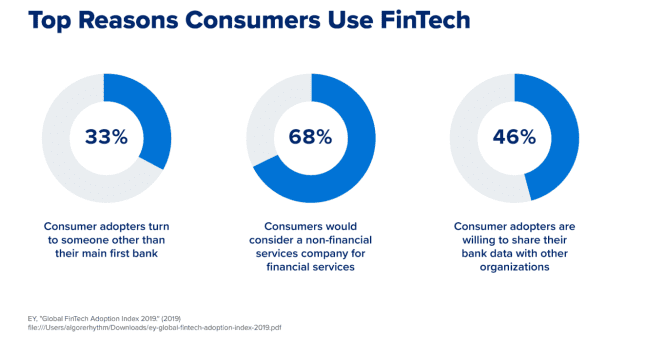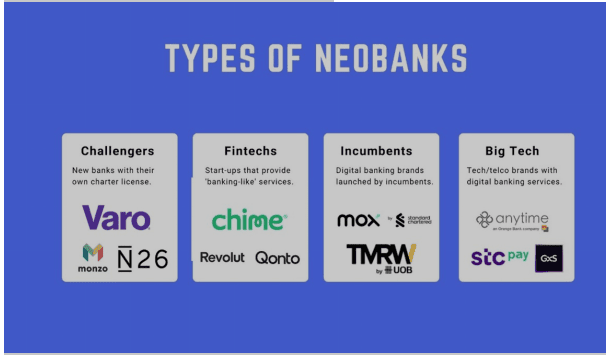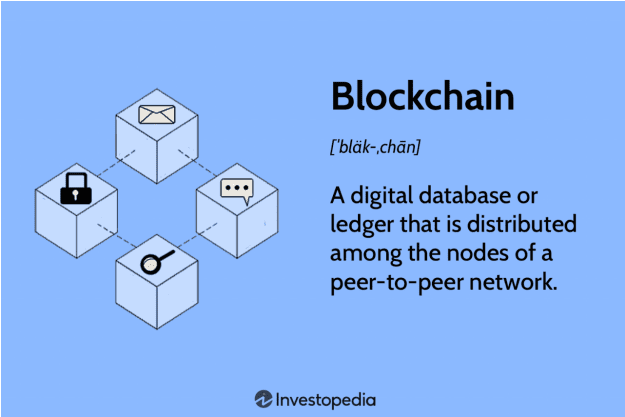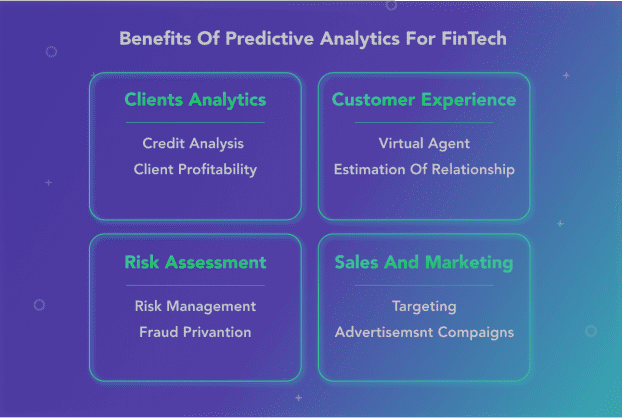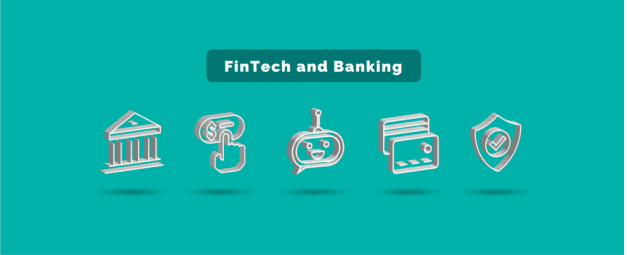If you’re interested in the world of finance and technology, then you’re in the right place. In recent years, FinTech has become an increasingly important sector, and it’s showing no signs of slowing down.
From mobile payments to cryptocurrency, there are a ton of exciting developments happening in this space.
However, with so much going on, it can be tough to keep up with all the latest trends and innovations. That’s where having a solid content strategy comes in.
By staying informed about what’s happening in the world of FinTech, you can make better decisions about your investments, keep your business competitive, and even discover new opportunities.
In this blog post, we’ll take a closer look at some of the most important trends and innovations to watch in the world of FinTech.
From the rise of neobanks to the growing use of blockchain technology, we’ll explore what’s happening in this exciting and rapidly-evolving field.
Whether you’re a professional investor or just getting started, there’s something here for everyone. So buckle up and let’s dive in!
Navigating the Future of FinTech: Trends and Innovations to Watch
It can be challenging to stay abreast of all the most recent advances in the world of finance and technology due to the quick rate of change in both of these fields.
But, if you want to keep one step ahead of the competition, it is imperative that you pay attention to the most recent developments and breakthroughs in the field of financial technology.
So, what precisely does the term “FinTech” mean? In its most basic sense, it is a term that is used to refer to the intersection of the financial sector and the technological sector.
This can include a wide variety of subjects, such as mobile payments, blockchain technology, and artificial intelligence, amongst others.
In recent years, the financial technology industry has grown into an increasingly vital sector as an increasing number of organisations attempt to take advantage of the most recent technological advancements to better their financial operations.
The proliferation of neobanks is currently recognised as one of the most significant developments in the field of financial technology.
Neobanks are financial institutions that are exclusively accessible online and provide many of the same services as conventional banks while charging lower costs and providing more adaptable options.
The proliferation of mobile banking, which has made it simpler than it has ever been to handle one’s finances while on the move, is one factor that has contributed to the growth of this trend.
Because neobanks are known for having user-friendly interfaces and efficient processes, younger customers tend to gravitate towards using them as their financial institution of choice.
The increasing implementation of blockchain technology is yet another significant development in the FinTech industry.
Blockchain is a decentralised ledger system that eliminates the need for centralised authorities while yet enabling secure and transparent financial transactions.
Because of this, it has become an appealing choice for a variety of applications, ranging from cryptocurrency to management of supply chains.
Everything from international payments to the selling of stocks is becoming significantly more efficient thanks to the implementation of blockchain technology in the world of finance.
Many industry experts feel that in spite of the fact that blockchain is still a relatively new technology, it has the potential to completely transform the financial services sector in the years to come.
Of course, neobanks and blockchain are not the only things reshaping the landscape of the financial technology industry.
There is a plethora of other fascinating progress being made in this sector, such as the implementation of artificial intelligence and the growth of platforms that facilitate crowdfunding.
In the following paragraphs, we will take a more in-depth look at some of the most significant developments and trends that you should keep an eye out for in the world of FinTech.
The Growing Influence of Neobanks
Neobanks are currently a prominent development in the field of financial technology, as was indicated earlier on in this article.
These banks that are accessible only online provide many of the same services as conventional banks, but at fees that are lower and with alternatives that are more adaptable. Chime, Ally Bank, and N26 are three of the most well-known examples of modern online financial institutions.
What exactly is it about neobanks that customers find so appealing?
One benefit is that online savings accounts typically come with a greater interest rate than those offered by traditional banks. As a result of not having to worry about the upkeep of physical locations, they typically charge less for their services as well.
Those who are living paycheck to paycheck or who are attempting to save money might benefit greatly from this in a number of ways.
In addition to this, customers recognise neobanks for their intuitive user interfaces and fast procedures. You may open an account online in a matter of minutes, and the majority of neobanks offer quick approval for accounts that are opened online.
Because your account can be managed using a mobile app or internet, it is simple to monitor your financial situation while you are on the move.
Of course, neobanks do not come devoid of any potential downsides. Because they exclusively operate online, it is not possible to go to a real location and have a conversation with a representative in person.
Yet because they are still a somewhat novel idea, some individuals may be hesitant to entrust them with their money because of how new the notion is.
These worries, on the other hand, are expected to become less of an issue if neobanks continue to expand their customer bases and solidify their positions in the financial industry as a whole.
The Technologies Behind Blockchain
Another significant development in the field of financial technology is the blockchain protocol. Blockchain is a distributed ledger technology, which we discussed before.
This technology makes it possible to conduct safe and transparent transactions without the need for a centralised authority to oversee them. Because of this, it has become an appealing choice for a variety of applications, ranging from cryptocurrency to management of supply chains.
The realm of cryptocurrencies is home to one of the most well-known applications of blockchain technology. Blockchain technology was used to build Bitcoin, which was the first and is currently the most well-known cryptocurrency.
Transactions between participants can be conducted on a blockchain in complete secrecy and without requiring the involvement of a third party, such as a bank or the government.
Because of this, individuals who are interested in the technology behind cryptocurrencies as well as those who want to circumvent traditional financial institutions have found cryptocurrencies to be intriguing options.
Yet, blockchain technology has applications that extend far beyond the realm of cryptocurrencies alone.
Additionally, it can be utilised for things such as “smart contracts,” which are contracts that autonomously execute themselves and enforce the terms of an agreement.
For instance, once certain criteria are satisfied, the ownership of a piece of property could be automatically transferred thanks to the usage of a smart contract.
This has the potential to make a large number of transactions considerably quicker, less expensive, and more secure.
Everything from international payments to the selling of stocks is becoming significantly more efficient thanks to the implementation of blockchain technology in the world of finance.
It may shorten the amount of time required for transactions while simultaneously lowering fees and increasing levels of safety.
In addition, due to the fact that it is decentralised, blockchain technology may be more resistant to hacking and fraud than traditional financial systems.
There are bound to be difficulties associated with the use of blockchain technology. The technology is still in its infancy, and as such, there are questions regarding how easily it can be scaled, how much energy it will use, and how it will be regulated. But, as more organisations and governments begin to investigate the possibilities offered by blockchain technology, it is possible that these difficulties will be resolved over the course of time.
Machine Learning and Artificial Intelligence
The fields of artificial intelligence (AI) and machine learning are becoming more significant contributors to the field of financial technology (FinTech).
AI, or artificial intelligence, is the practise of employing computers to carry out activities that would typically require the intelligence of a human being, such as the processing of language or the making of decisions.
A subfield of artificial intelligence known as machine learning enables computers to learn from experience and get better with practise.
In the field of finance, artificial intelligence and machine learning are being utilised for a wide variety of purposes, including the detection of fraud, the grading of credit, and the suggestion of investments.
For instance, AI can be used by banks to assess a customer’s spending patterns and provide individualised financial guidance to the customer. Investment companies can improve their decision-making by using machine learning algorithms to examine enormous volumes of data and come to better educated conclusions.
The capability of artificial intelligence and machine learning to process massive volumes of data rapidly and accurately is one of the technologies’ most significant advantages.
This enables organisations to make decisions that are more informed and to recognise trends that may not be immediately visible to humans.
Concerns have been raised, however, regarding the possibility of bias in these systems, as well as the influence they will have on jobs and on individuals’ right to privacy.
Crowdfunding and Peer-to-Peer Lending
Last but not least, crowdfunding and peer-to-peer lending are two further developments that are altering the landscape of the financial technology industry.
Platforms for crowdfunding make it possible for individuals and enterprises to solicit financial contributions from a large number of backers, most often over the internet. Without resorting to more traditional methods, this might be an excellent way for new enterprises or existing firms of any kind to acquire finance.
On the other hand, peer-to-peer lending refers to the practise of individuals lending money to other persons through the use of various internet platforms.
Those who are unable to obtain credit through conventional banking institutions might be able to do so using this alternative method. Platforms for peer-to-peer lending typically provide borrowers with interest rates that are lower than those offered by traditional lenders, which can be enticing to borrowers.
Yet, both crowdsourcing and peer-to-peer lending come with their own unique set of potential downsides.
There is no assurance that investors will receive their money back, and there is a possibility that the borrowers, be they businesses or people, would be unable to repay their loans.
Concerns have also been raised over the possibility of fraudulent behaviour occurring on these sites.
Conclusion
The field of financial technology is undergoing tremendous change, and there are a great deal of fascinating trends and breakthroughs to keep an eye on.
A great deal of transformation is taking place in this sector, as seen by the proliferation of blockchain technology and the advent of new financial institutions, such as neobanks. You’ll be able to make more educated choices about your investments, maintain your company’s competitive edge, and find new avenues for growth if you maintain a high level of awareness regarding the advances taking place and have a sound content strategy.
Of course, it is essential to keep in mind that not all FinTech trends will be applicable to every single company or person.
This is something that must be kept in mind at all times. It is up to you to determine which new developments are most relevant to your personal circumstance and circumstances overall.
Having said that, it is always a good idea to be educated about the latest trends and advancements, particularly because they could effect your business or your personal finances in the future.
A sound content strategy might be just as important as keeping abreast of the latest developments in FinTech, which are constantly evolving. Because there is so much information available, it can be challenging to know where to turn to find information that is dependable and trustworthy regarding the world of finance and technology.
You can make sure that you are acquiring the information you require from reliable sources by putting together a content plan and putting it into action.
The question now is, what exactly does an effective content strategy look like? It can vary based on the type of information you’re looking for and the goals you have, but there are a few essential components that need to be included:
- Clear goals: What are you hoping to achieve with your content strategy? Do you want to become a thought leader in your industry, generate leads for your business, or simply stay informed about the latest trends? Defining your goals can help you stay focused and make better decisions about what types of content to create and share.
- Target audience: Who are you trying to reach with your content? Are you targeting business owners, investors, or consumers? Understanding your target audience can help you create content that resonates with them and provides real value.
- Content types: What types of content will you be creating? Will you focus on blog posts, videos, infographics, or something else entirely? Different types of content can be more effective for different goals and target audiences, so it’s important to consider what will work best for your particular situation.
- Distribution channels: How will you get your content in front of your target audience? Will you rely on social media, email marketing, or some other distribution channel? Understanding how you’ll distribute your content can help you ensure that it’s reaching the right people.
- Metrics: How will you measure the success of your content strategy? Will you track website traffic, social media engagement, or some other metric? Defining your metrics can help you understand what’s working and what’s not, and make adjustments to your strategy as needed.
You can ensure that you are keeping up with the most recent developments and trends in FinTech if you have a well-defined content strategy in place.
This will also allow you to obtain the knowledge you require to make educated choices regarding your money and investments. It is more critical than ever before to keep informed and have a strategy in place for navigating the future of FinTech given the amount of change that is taking place in this field.
Now, let’s take a more in-depth look at some of the most important developments and trends that are reshaping the future of the fintech industry:
- Digital Payments: The rise of digital payments has been one of the biggest trends in FinTech in recent years, and it shows no signs of slowing down. With the pandemic accelerating the shift away from cash, more and more consumers are turning to digital payment options like mobile wallets, contactless payments, and peer-to-peer payment apps.
- Cryptocurrencies: Another trend that’s been making waves in the FinTech world is the rise of cryptocurrencies like Bitcoin, Ethereum, and others. While the use of cryptocurrencies is still relatively niche, more and more investors are starting to see them as a viable alternative to traditional currencies and investments.
- AI and Machine Learning: Artificial intelligence and machine learning are playing an increasingly important role in FinTech, helping to automate processes, improve fraud detection, and provide more personalized experiences for customers.
- Open Banking: Open banking is a trend that’s been gaining momentum in Europe and other parts of the world, and is now starting to make its way to the United States. Essentially, open banking allows customers to share their financial data with third-party providers, which can then use that data to offer more personalized financial services.
- Digital Lending: Finally, digital lending is another trend that’s been growing in popularity in recent years. With more and more consumers turning to online lenders for everything from personal loans to mortgages, traditional banks are being forced to adapt and innovate in order to stay competitive.
In conclusion, the future of financial technology is both interesting and promising, but it is also in a state of perpetual evolution.
You will be able to confidently traverse this complex landscape and make well-informed decisions regarding your money and investments if you keep up with the most recent developments in terms of both trends and innovations and if you have a sound content strategy in place.
There has never been a better time to investigate the opportunities presented by the financial technology sector, regardless of whether you are a business owner, an investor, or just someone who wants to keep informed about the world of finance and technology.


